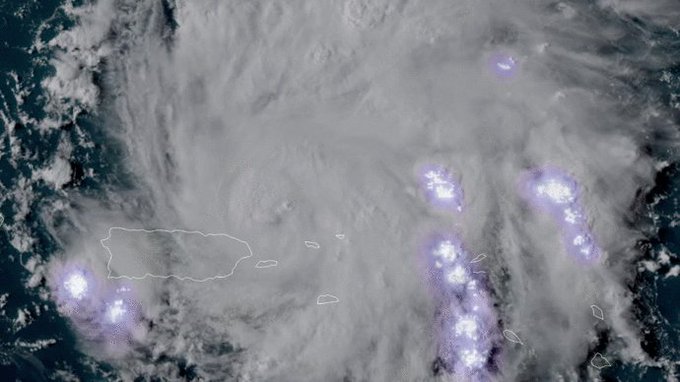On Wednesday, NOAA's GOES-16 weather satellite captured the dramatic imagery of lightning striking in the eye of Hurricane Dorian.
While the imagery creates a stunning light show on satellite, lightning in the eye of the hurricane is a precursor for the rapid intensification of a hurricane, according to AccuWeather Hurricane Expert Dan Kottlowski.
"Lightning in the eye... means thunderstorms are really intense, and the more intense the thunderstorms are, that causes the eye to contract a little bit more," Kottlowski said. "It causes the pressures to fall as well, and that's a part of intensification."
The satellite imagery isn't picking up visual lightning from space in this video, but rather the "sferics," or the electrical discharge from the lightning.
"It's picked up by sensors on board the satellite so that we can see where lightning is occurring," Kottlowski said.
AM radio also catches these sferics, which make the sound of static when you tune the radio to the right side of the dial comes from them, Kottlowski explained.
Even more lightning was detected near Dorian's eye on Friday afternoon and evening as the storm experienced another burst of rapid intensification.
RELATED:
Florida, Bahamas on high alert as Hurricane Dorian reaches Category 4 strengthFlorida nursing homes, prisons brace for Hurricane DorianFloridians flock to stores, begin preparations for Dorian as governor declares state of emergencyIn Hurricane Dorian’s track, echoes of Andrew in 1992AccuWeather increases its predicted total damage from Major Hurricane Dorian
GOES-16 is a weather satellite that orbits the Earth over 22,000 miles from the planet's surface. Launched in 2016, the satellite is equipped with a Geostationary Lightning Mapper (GLM) that it uses to detect lightning in thunderstorms, or in this case, in the eye of a powerful hurricane.
According to NOAA, this instrument has the "ability to monitor the intensity change of tropical cyclones, which is often accompanied by increased lightning activity."
This sophisticated instrument is also on its twin, GOES-17, which is able to collect similar data from tropical systems across the eastern Pacific Ocean.



No comments:
Post a Comment